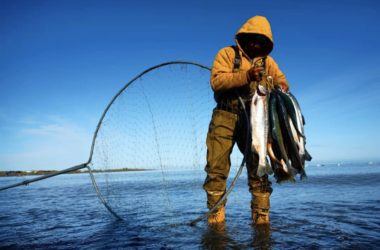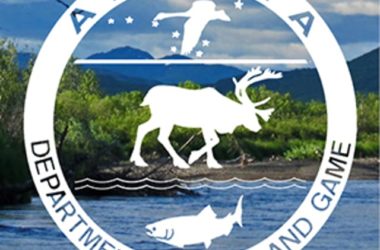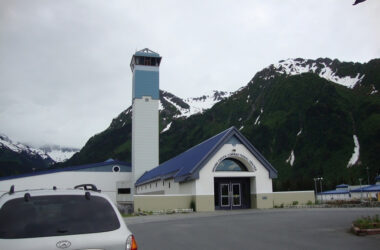Department of Transportation members came to the Borough Assembly Chambers on Monday night to talk to the community about the current status of brine usage on the Kenai Peninsula and hear some concerns that individuals may have.
According to Legislative Liaison Andy Mills, the DOT has six goals that it is working to achieve this year.
Brine Usage
The first and foremost was to reduce the brine use on the Kenai Peninsula.
“That was provided back after our October 11 Meeting, detailing a goal of trying to reduce brine this last winter by 40%. When I checked in midwinter, our M&R operators had achieved a slightly over 80% reduction. So, it was a substantially lower reduction than even the target that the commissioner had detailed. And that was largely because our M&R folks were very aware of the community’s concern with the application of brine,” said Mills.
According to Sean Holland, Regional Director for the Central Region, the maintenance and operations department reviewed a flowchart to determine the amount of brine used.
“And I think the final numbers will you’ve probably heard a few numbers on the reduction, but based on weight of product average over the three previous years, there was a 69% reduction in brine,” said Holland.
Funny River Road Pilot Program
The second goal of the DOT was to launch a pilot program on Funny River Road. This winter, the road was only to use salt and sand, and absolutely no brine. According to testimony from a female resident who lives at mile 16, this was the best year it’s ever been to drive the road.
“There wasn’t ice build up and you know funny River Road is not an easy road to drive in the winter. Especially now with the the way they design the road. There’s like slide off and totally destroy your car and before before they changed it. I had a really serious accident. Where I rolled my jeep, I totaled it, and that was when the brine was used, but this past year, it was absolutely fantastic. So that’s basically all I have to say. It was just fantastic. I’d like to keep it that way. I wasn’t afraid to drive,” said the resident.
Commitment to Increase Sand Usage
The next goal was to increase the amount of sand that was used as a way to offset the brine application that was previously put on the roads. Mills said that this step was done immediately.
“We had an additional 3000 tons of sand, and we will look for strategies, I believe, in the coming year to do more. Because again, from our operator experience, they (DOT) definitely put down more sand, that was a 20%, I believe, increase when we checked in midwinter/late February, that timeframe when I did a comprehensive check,” said Mills.
Continue to Train Staff
The fourth item that Mills discussed was enhancing the training program that the M&O staff would be participating in on the Kenai Peninsula. Not only would more training be done here, but the DOT hoping to be able to extend their training throughout the state as a way to try and “redouble” their efforts.
In regards to training, a community member did speak up about not necessarily training, but asking that some of the truck workers have some “common decency.” He explained that there’s been an ongoing issue that many of the truck users will leave the spouts on at stoplights, which in turn, resulted in many vehicles behind them to get hit with brine or salt for “five minutes.” Many community members agreed and shared similar situations with other truck drivers. Mills said he would have this be discussed to the driver to ensure this doesn’t become a problem in the future.
Update M&O Handbook
However, considering that there’s been a concern with some of the driving employees, Mills mentions that the DOT is going to review and update their M&O Handbook, which would help stop any future issues now, and into the future. The handbook was last commissioned in 2014, and Mills says that 10 years is the longest that documents should set without being updated.
“Our recommissioned at that time and so we would we have been I read through it myself and we are talking with MNL Chiefs about doing a review on that manual. And they’ll have an eye towards brine application, but also other elements of maintenance and operations to update in that manual too,” said Mills.
Literature Review
The final item to be addressed was a literature review. Mills explains that they have asked Laura Faye, a cold climate scientist from the University of Montana, to work alongside them in analyzing the literature review process.
“She’s working with the MNL forces on a lit review specific to corrosion is the scope of that. I know there are other areas of interest that we have talked about and I certainly look in the future to have additional conversations about bringing other departments in that can talk about other areas of of scope in review….For that literature review, we anticipate sometime in the later this year is what we’re looking at for for our final net and we’ll certainly look to come back to the community to talk and discuss that myself and potentially someone from the literature review team,” said Mills.
Other Areas of Concern
Representative Ben Carpenter did voice some concerns regarding the usage of brine and how it affects community members’ cars.
“As to the effects of corrosion on vehicles, I’m assuming vehicles but we’re going to continue to plan to use it even though we don’t yet know the results of that document review. So from the layman’s terms from the people’s perspective my vehicles have already sustained damage. We’re going to continue using brine and I can only assume that damage will continue to my vehicles and DOT is okay with that. That’s what the public is going to hear. It would be far better message to send to the public that says ‘hey, you know what, we’ve got a review of brine, a document review. We’re looking into it we’re gonna hold off using brine until we’re sure that we’re not adversely impacting the public.’ Little on our own vehicles, department vehicles that are also subject to brine additional corrosion which is an additional state cost,” said Carpenter.
Carpenter also explained that he has received many phone calls from the community regarding the usage of brine and how to affects the environment.
“And so if we’re going to continue to use brine but we don’t have an assessment on the environmental impacts, nor on the corrosion impacts, I question the decision as to why we’re continuing to use it,” said Carpenter.
Mills explains that the DOT did not ask for additional funding in regards to doing a study for the environmental aspect due to the fact they they are already doing a study on the corrosion, which was what the community originally petitioned for.
Mills understands that many folks are interested in regards to how brine impacts the environment and biology of humans, but in order to make something like this possible, the DOT would need to partner with the Alaska Department of Fish and Game and tie it into an environmental conservation study.
Although there was a mix of emotions, Borough Mayor Peter Micciche wanted to recognize that the leaders for the Department of Transportation have done a great amount of work in listening to the community, and while it’s not perfect, it’s significantly better than where it was.
“I think they’re doing the best they can with what they have so far but if they didn’t listen, our roads would have been saturated with brine all winter long, so I think they’ve done a good job on listening. I think they’ve got a ways to go as they collect more data, but I’m going to defend the department I’ve been working with for a very long time for being responsive. Like my experience for a very long time has not been a department that’s been as amazingly responsive so like give credit where credit’s due,” said Micciche.






